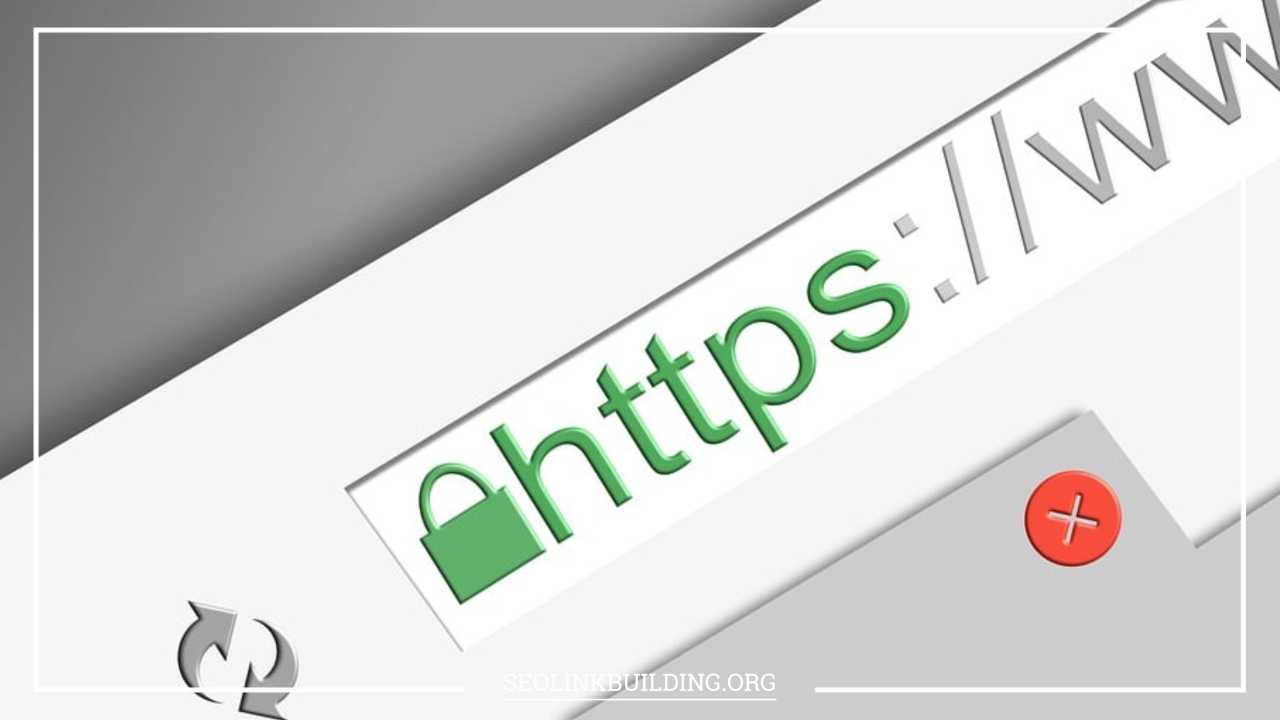What is HTTPS? Everything You Need to Know

What is HTTPS
HTTPS: The Secure Shield of the Internet
In the digital age, where vast amounts of personal and sensitive data traverse the internet daily, ensuring security is paramount.
One of the most critical protocols in maintaining this security is HTTPS, which stands for Hypertext Transfer Protocol Secure. HTTPS is essentially the fortified version of HTTP, the protocol that forms the backbone of the World Wide Web.
Its primary role is to provide a secure communication channel by encrypting data exchanged between a user’s browser and a website, thus safeguarding against eavesdropping and tampering.
This comprehensive guide will explore HTTPS in detail, covering its mechanisms, benefits, and the steps required for implementation.
Understanding HTTPS
To appreciate the significance of HTTPS, it’s essential to understand its foundational role in internet communication. HTTP, or Hypertext Transfer Protocol, is the protocol used to transfer data between a web server and a client (usually a web browser).
It’s the basis of data communication on the World Wide Web. However, HTTP alone is not secure; data transmitted over HTTP can be intercepted and read by anyone who has access to the data flow between the client and server.
HTTPS builds upon HTTP by incorporating encryption. The ‘S’ in HTTPS stands for ‘Secure’, which signifies that the protocol has an added layer of security.
HTTPS utilizes encryption technologies to secure the data transmitted between the client and server, making it difficult for unauthorized parties to intercept or alter the information.
The Role of Encryption in HTTPS
Encryption is a process that transforms readable data into an encoded format that can only be read by someone with the appropriate decryption key.
This is crucial for protecting sensitive information from prying eyes. In the context of HTTPS, encryption serves several key functions:
- Data Confidentiality: By encrypting data, HTTPS ensures that the information exchanged between your browser and the website is unreadable to anyone who might intercept it. This means that personal information, credit card details, and login credentials are protected from unauthorized access.
- Data Integrity: HTTPS not only encrypts data but also verifies that it hasn’t been altered during transmission. This protects against tampering and ensures that the data received is the same as the data sent.
- Authentication: HTTPS helps verify the identity of the website you are communicating with. It prevents you from inadvertently connecting to a fraudulent website designed to steal your information.
Key Components of HTTPS
To fully understand HTTPS, it’s essential to delve into the technologies and components that make it secure. The main components include:
1. TLS/SSL Protocols
Transport Layer Security (TLS) and its predecessor, Secure Sockets Layer (SSL), are cryptographic protocols that provide the secure communication framework for HTTPS. Here’s a brief overview:
- SSL (Secure Sockets Layer): Developed by Netscape in the 1990s, SSL was the first protocol designed to secure internet communications. However, due to various security vulnerabilities discovered over time, SSL has been succeeded by TLS.
- TLS (Transport Layer Security): TLS is the modern, more secure version of SSL. It is the protocol currently used in HTTPS to encrypt data. TLS has undergone several iterations to improve security and performance, with the most recent version being TLS 1.3.
Both SSL and TLS use a combination of asymmetric and symmetric encryption to secure data. Asymmetric encryption, or public-key cryptography, uses two keys—a public key to encrypt the data and a private key to decrypt it.
Symmetric encryption, on the other hand, uses a single key for both encryption and decryption, providing faster processing once the secure connection is established.
2. Digital Certificates
Digital certificates play a crucial role in HTTPS by verifying the identity of the website. These certificates contain:
- Domain Name: The certificate specifies the domain name that it has been issued for, ensuring that users are connecting to the intended website.
- Public Key: This key is used for encrypting data sent to the server. It is part of the asymmetric encryption process.
- Certificate Authority (CA): A trusted entity that issues the certificate and verifies the identity of the website owner. The CA’s signature on the certificate confirms its authenticity.
- Validity Period: Certificates have a validity period, after which they need to be renewed to ensure continued security.
When a user connects to a website using HTTPS, their browser verifies the digital certificate against a list of trusted CAs. If the certificate is valid and the website’s identity is confirmed, a secure connection is established.
3. Public Key Infrastructure (PKI)
Public Key Infrastructure (PKI) is the system that manages digital certificates and public-key encryption. PKI involves several key components:
- Certificate Authorities (CAs): These are trusted organizations that issue digital certificates. They play a critical role in the trust model of HTTPS by validating the identity of certificate applicants.
- Registration Authorities (RAs): These entities verify the identity of certificate applicants before the CA issues the certificate.
- Certificate Revocation Lists (CRLs): A list maintained by CAs that includes certificates that have been revoked before their expiration date. This ensures that compromised or outdated certificates are not used.
- Certificate Stores: Repositories where digital certificates are stored. They are used by browsers and other software to verify the validity of certificates.
The Benefits of HTTPS
The adoption of HTTPS provides numerous advantages, enhancing the security and trustworthiness of online interactions. Here are some of the key benefits:
1. Enhanced Data Privacy
One of the most significant benefits of HTTPS is the protection of data privacy. Encryption ensures that any data transmitted between the client and server is secure from interception.
This is particularly important for sensitive information, such as personal details, payment information, and login credentials. Without HTTPS, this data could be exposed to hackers or malicious actors who might intercept it during transmission.
2. Data Integrity
HTTPS guarantees that the data sent and received has not been tampered with. Data integrity checks are performed during transmission, ensuring that the information remains unchanged.
This is crucial for preventing attacks where data could be altered or corrupted while in transit.
3. Authentication
By verifying the identity of the website, HTTPS prevents users from falling victim to phishing attacks and fraud.
When a website is secured with HTTPS, users can trust that they are interacting with the legitimate site, not a fraudulent copy designed to steal their information.
4. Improved Search Engine Ranking
Search engines, particularly Google, favor websites that use HTTPS. HTTPS is considered a ranking factor in search engine algorithms, meaning that websites secured with HTTPS are more likely to achieve higher search engine rankings. This can lead to increased visibility and traffic.
5. Increased User Trust
A secure connection builds user trust. When users see the padlock icon in their browser’s address bar, they are reassured that their data is being handled securely. This trust is vital for e-commerce sites, financial institutions, and any website that handles sensitive information.
Implementing HTTPS
Implementing HTTPS on a website involves several steps:
1. Obtain an SSL/TLS Certificate
The first step is to acquire an SSL/TLS certificate from a trusted Certificate Authority (CA). There are several types of certificates available, including:
- Domain Validated (DV) Certificates: These certificates verify that the applicant has control over the domain. They are the most basic and affordable option.
- Organization Validated (OV) Certificates: These certificates verify both the domain and the organization behind it. They provide a higher level of assurance.
- Extended Validation (EV) Certificates: These offer the highest level of validation. They require a rigorous verification process and display the organization’s name in the browser’s address bar, enhancing trust.
2. Install the Certificate
Once you have obtained the certificate, you need to install it on your web server. This process varies depending on the server software you are using, but generally involves:
- Uploading the Certificate: Upload the certificate file and any intermediate certificates provided by the CA to your server.
- Configuring the Server: Update your server’s configuration to enable HTTPS and specify the location of the certificate files.
- Testing the Installation: Verify that the certificate is correctly installed and that HTTPS is functioning properly. Tools like SSL Labs’ SSL Test can help with this.
3. Update Your Website
After installing the certificate, you need to update your website to use HTTPS. This involves:
- Redirecting HTTP to HTTPS: Implement 301 redirects to automatically redirect users from the HTTP version of your site to the HTTPS version. This ensures that all traffic is encrypted.
- Updating Internal Links: Update all internal links and resources to use HTTPS. This prevents mixed content issues where some elements of the page are loaded over HTTP.
- Updating External Links: Contact external websites and services that link to your site and request that they update their links to use HTTPS.
4. Monitor and Maintain
Ongoing maintenance is crucial to ensure that HTTPS remains effective:
- Renew the Certificate: SSL/TLS certificates have a validity period and need to be renewed before they expire.
- Monitor for Security Issues: Regularly check for vulnerabilities and ensure that your server software and certificate are up-to-date.
- Audit Your Site: Periodically audit your website for any issues related to HTTPS, such as mixed content warnings or expired certificates.
HTTPS and User Experience
While HTTPS provides essential security benefits, it can also impact user experience. One potential concern is the slight performance overhead introduced by encryption.
Encrypting and decrypting data adds computational work for both the client and server, which can lead to slower page load times.
However, modern web technologies and optimizations have significantly reduced the performance impact of HTTPS. For example:
- HTTP/2: This newer version of the HTTP protocol, used alongside HTTPS, includes features like multiplexing and header compression that improve performance.
- TLS Optimization: Recent versions of TLS are more efficient and faster than older versions. TLS 1.3, for instance, reduces the time required to establish a secure connection.
- Caching: Caching mechanisms and Content Delivery Networks (CDNs) can mitigate the performance impact by reducing the number of secure connections needed.
Overall, the security benefits of HTTPS typically outweigh any minor performance trade-offs. The added layer of protection it provides is essential for maintaining user trust and safeguarding sensitive data.
HTTPS in the Modern Web
In recent years, HTTPS has become the standard for secure web communication. Major web browsers like Google Chrome, Mozilla Firefox, and Apple Safari have made HTTPS a priority:
- Browser Indicators: Modern browsers display a padlock icon in the address bar to indicate that a website is secure. This visual cue reassures users that their connection is encrypted.
- Security Warnings: Browsers now warn users when they attempt to access a website that is not using HTTPS. These warnings highlight the importance of secure connections and encourage website owners to adopt HTTPS.
- Search Engine Recommendations: Search engines, particularly Google, actively promote the use of HTTPS. Google’s search algorithms give preference to HTTPS websites, which can impact search engine rankings and drive traffic.
The adoption of HTTPS has become a best practice for all websites, not just those handling sensitive information. It’s a fundamental aspect of maintaining a secure and trustworthy online presence.
Final Thoughts
HTTPS is a cornerstone of modern internet security, providing essential protection for online communications. By encrypting data, verifying website identities, and ensuring data integrity, HTTPS plays a vital role in safeguarding privacy and securing digital interactions.
As the internet continues to evolve, HTTPS will remain a fundamental component of secure communication, ensuring that users can trust the websites they visit and protecting sensitive information from unauthorized access.
With the increasing emphasis on online security, implementing HTTPS is not just a technical requirement but a critical step in building trust and ensuring the safety of internet users.
As we move forward in the digital age, the continued adoption and enhancement of HTTPS will be crucial in maintaining a secure and reliable online environment.













